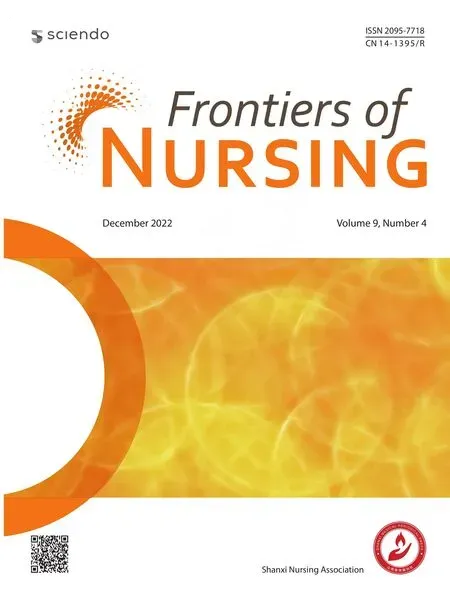Inhaler use in chronic obstructive pulmonary disease patients: a meta-analysis†
Li-Jun Zhou, Xin-Xiu Wn*, Rong Jing Hung-Yun Zhou, Yn Li, Xio-Rng Mo Mi Ln
aDepartment of Respiration and Critical Care Medicine, Sichuan Provincial People’s Hospital, University of Electronic Science and Technology of China, Chengdu, Sichuan 610000, China
bDepartment of Nursing, Sichuan Provincial People’s Hospital, University of Electronic Science and Technology of China, Chengdu, Sichuan 610000, China
cSchool of Medicine, University of Electronic Science and Technology of China, Chengdu, Sichuan 610000, China
dDepartment of Central, Sichuan Provincial People’s Hospital, University of Electronic Science and Technology of China, Chengdu, Sichuan 610000, China
eDepartment of Sichuan Provincial People’s Hospital, University of Electronic Science and Technology of China, Chengdu, Sichuan 610000, China
Abstract: Objective: To evaluate errors in the use of inhalation techniques in patients with chronic obstructive pulmonary disease (COPD), and to provide evidence for improving the effectiveness of drugs.Methods: A meta-analysis was performed after searching for literature at PubMed, Embase, Web of Science, Cochrane Library, CINAHL, China National Knowledge Infrastructure (CNKI), WanFang, VIP, and SionMed databases which were published from January 2011 to October 2020, addressing errors in the use of inhalation technologies for the treatment of COPD. After reviewing the literature, extracting pertinent information, and evaluating the risk of bias for the included studies, statistical analysis was performed using Stata 15.1.Results: Thirteen papers (12 in English and 1 in Chinese), representing 2527 patients, met the search criteria and were included in the meta-analysis. The results showed that the combined effect size of COPD patients making at least one operational error was 76% (95% CI: 0.69–0.83). The error rate varied with inhaler type; the combined effect size error for powered inhalers was 66% (95% CI: 0.57, 0.74), 67% (95% CI. 0.57, 0.77) for metered-dose inhalers (MDI), and 51% (95% CI: 0.38, 0.64) for soft mist inhalers (SMI).Conclusions: More than 75% of patients with COPD were unable to consistently use inhalers correctly, with the highest error rate for MDI. Therefore, health care providers must continue to educate patients on proper use of inhaler, ensuring their correct use and reducing the risk of acute COPD exacerbations.
Keywords: chronic obstructive pulmonary disease • inhaler handling errors • inhaler technique • medications • meta-analysis
1. Introduction
Chronic obstructive pulmonary disease (COPD) is a common clinical chronic disease that affects approximately 251 million people worldwide.1,2To effectively manage acute exacerbations of COPD and slow down disease progression, the Global Initiative for Chronic Obstructive Lung Disease (GOLD) 2020 guidelines recommended the use of long-acting toxic alkaloid antagonists (LAMA) and/or long-acting β2-agonists (LABA) as the primary maintenance therapy for COPD.3LAMA and LABA drugs are delivered in high concentrations directly to the respiratory tract via inhalation therapy, which rapidly achieves pharmacological effects and reduces systemic side effects.3Inhalation therapy, therefore, plays a vital role in the treatment of COPD.4–6The main inhalation devices used in inhalation therapy include metered-dose inhalers (MDI), dry powder inhalers (DPI), and soft mist inhalers (SMI).7–12Inhalation therapy plays a particularly vital role in treatment and each inhaler requires a correct inhalation technique to effectively deliver the drug to the lungs. Failure to operate the device correctly can increase the risk of disease progression, hospitalization frequency, and utilization of health resources, potentially leading to premature death. For inhaler handling technique evaluations, clinical staff assess the patient’s inhaler technique against an inhaler handling checklist. Previous authors have systematically evaluated DPIs.13In addition, Navaie et al.14conducted an error rate analysis of SMIs and Cho-Reyes et al.15studied the incidence of inhaler use errors in the US population. Another study found that the type and number of common inhalant errors had not changed over the past 40 years.11
The rate of inhaler error remains an unresolved issue, as it is determined by several factors, including patient country, region, literacy, age, and training instructions. This paper examines the incidence of inhalation errors in COPD patients from 2011 to 2020 and explores the incidence of user errors for three types of inhalation devices. The objectives of this study are to conduct a meta-analysis to (1) understand the current incidence of inhaler errors, (2) provide an accurate assessment of patients, (3) identify effective interventions for improving drug efficacy and reducing the incidence of adverse inhalation techniques, and (4) utilize the published literature to provide research-based evidence for future instruction of patients’ use of inhalers.
2. Methods
For the meta-analysis, studies were included if they met the following criteria: (1) Study type published: domestic and international studies on the error rate of inhaler handling in patients with COPD, including cross-sectional studies, observational studies, and randomized controlled studies; (2) Study population: adults >18 years of age diagnosed with COPD; (3) Observation indicator: use of at least one or more inhalation agents; (4) Outcome indicator: incidence of inhaler handling errors; (5) Study publication period: January 2011 to October 2020; and (6) Language: English or Chinese.
Studies were excluded using the following criteria: (1) COPD inhaler use without separate listings of outcome measurements; (2) incorrect, incomplete, or unavailable raw data; and (3) abstracts, reviews, and case reports.
2.1. Literature search strategy
Computer searches were conducted at PubMed, Embase, Web of Science, Cochrane Library, CINAHL, CNKI, WanFang, VIP, and SionMed databases using a combination of subject terms and free words. English search terms included chronic obstructive pulmonary disease, acute exacerbation of chronic obstructive pulmonary disease, COPD, inhalant, and inhaler. Chinese search terms included Chronic Obstructive Lung Disease, Chronic Obstructive Pulmonary Diseases, COAD, COPD, Chronic Obstructive Airway Disease, Chronic Obstructive Pulmonary Disease, Airflow Obstruction, Chronic, Airflow Obstructions, Chronic, Chronic Airflow Obstructions, Chronic Airflow Obstruction, Vaporizers and Nebulizers, Inhaler, Metered Dose, Metered Dose Inhaler, MDI (Inhalers), Inhalers, Metered Dose, Spacer Inhalers, Spacer Inhaler, Spacer-Inhalers, Spacer-Inhaler, Spinhalers, Spinhaler, cVaporizer, Inhalers, Inhaler, Inhalators, Inhalator, Nebulizers, Nebulizer, Atomizers, Atomizer, Inhalation Devices, Device, Inhalation, Devices, Inhalation, Inhalation Device, Relative risk, Error, Inaccuracy, Mistake, Misconfiguration, Improper, serious error, incorrect; error rate; failure rate; operation error; influencing factor; associated factor; risk factor. As an example, the search strategy used in PubMed is provided in Box 1.
2.2. Literature screening and data extraction
Reviewing the literature to screen articles for inclusion in the study began with two researchers conducting a pre-review of 3 articles to ensure consistency in the literature screening and quality assessment. After both researchers determined the article selection process was consistent, all references were imported into Endnote software to eliminate duplicates, screen articles to assess their quality and relevance, extract data, and cross-check the results of the researchers. Any inconsistencies that arose were resolved through discussion. The researchers extracted the following information: (1) citation data (e.g., basic information: title, first author, date, country of publication); (2) type of study design; (3) study population (e.g., gender, age, number of cases included, type of inhaler); and (4) study outcomes, particularly the incidence of errors.
Box 1.PubMed search strategy.
#1 Chronic Obstructive Pulmonary Diseases OR COPD OR Chronic Obstructive Airway Disease OR Chronic Obstructive Airway Disease OR Airflow Obstruction, Chronic OR Airflow Obstructions, Chronic OR Chronic Airflow Obstructions AND Chronic Airflow Obstruction OR Pulmonary Disease, Chronic Obstructive
#2 Vaporizer OR Inhalers OR Inhaler OR Inhalators OR Inhalator OR Nebulizers OR Nebulizer OR Atomizers OR Atomizer OR Inhalation Devices OR Device, Inhalation OR Devices, Inhalation OR Inhalation Device OR Nebulizers and Vaporizers
#3 Risk factor OR Relevant factor OR Relate* factor* OR Influenc* factor*OR Error OR Inaccuracy OR Mistake OR Misconfiguration OR Improper OR serious error OR incorrect OR error rate OR failure rate
#1AND #2 AND#3
2.3. Evaluation of risk of bias in included studies
The researchers evaluated the risk of bias using appropriate methods based on study type. Randomized controlled studies were evaluated using the Cochrane Collaboration Risk of Bias Tool, cross-sectional studies were evaluated using the Joanna Briggs Institute (JBI)-developed risk of bias criteria for cross- sectional studies, and cohort studies were evaluated using the Newcastle–Ottawa quality scale (NOS).
2.4. Statistical analysis
Clinical symptoms and laboratory results were compiled using Microsoft Excel 2016 version software and a single-arm meta-analysis of the included literature was performed via Stata 15.1. Study heterogeneity was determined using Cochran’s chi-square test andI2-test. WhenI2<50%, it indicates a small heterogeneity among the studies, and a fixed-effects model was used for analysis. WhenI2>50%, it indicates a large heterogeneity among the studies, and a random-effects model was selected for analysis, and further subgroup and sensitivity analyses were used to determine the source of heterogeneity. If the number of meta-analysis studies was ³10, funnel plots and Egger’s test were used to detect the presence of publication bias.
3. Results
3.1. Literature search and study selection
A preliminary literature search involved screening 1024 published articles for inclusion in the current study: 821 were in English and 203 in Chinese. After stratification screening, 13 studies were selected, including 5 cohort studies,16–207 cross-sectional studies,8,21–26and 1 randomized controlled study,27with a total of 2499 study subjects. The literature screening process is shown in Figure 1.

Figure 1. Literature search and selection.
3.2. Basic characteristics of studies included
Table 1 provides the basic characteristics of the selected studies, including the type of study, country, percentage of females, age, number of cases, and inhaler type. The present study included 2527 cases, with females representing 42.1% of the study population.
The NOS scale was divided into eight items in the areas of study population selection, comparability, and outcome evaluation to determine the risk of bias in cohort studies. The quality of the scale was considered to be of (1) good quality when the study population selection was 3 or 4 stars (*), comparability was 1 or 2 stars, outcome evaluation was 2 stars; (2) fair quality when the population selection was 2 stars, outcome evaluation was 2 stars, population selection was 2 stars, comparability was 1 or 2 stars, and outcome evaluation was 2 or 3 stars; and (3) poor quality when the population selection was 0 or 1 stars, comparability was 0 stars, and outcome evaluation was 0 or 1 stars (Table 2).
Table 3 shows the results of the JBI cross-sectional study risk of bias evaluation. A risk of bias score >70% in the JBI cross-sectional survey is considered low. The results of the randomized controlled study risk of bias evaluation are shown in Figure 2.

Table 1. Clinical characteristics of included trials.

Table 2. Results of risk of bias evaluation of the included literature by NOS score.
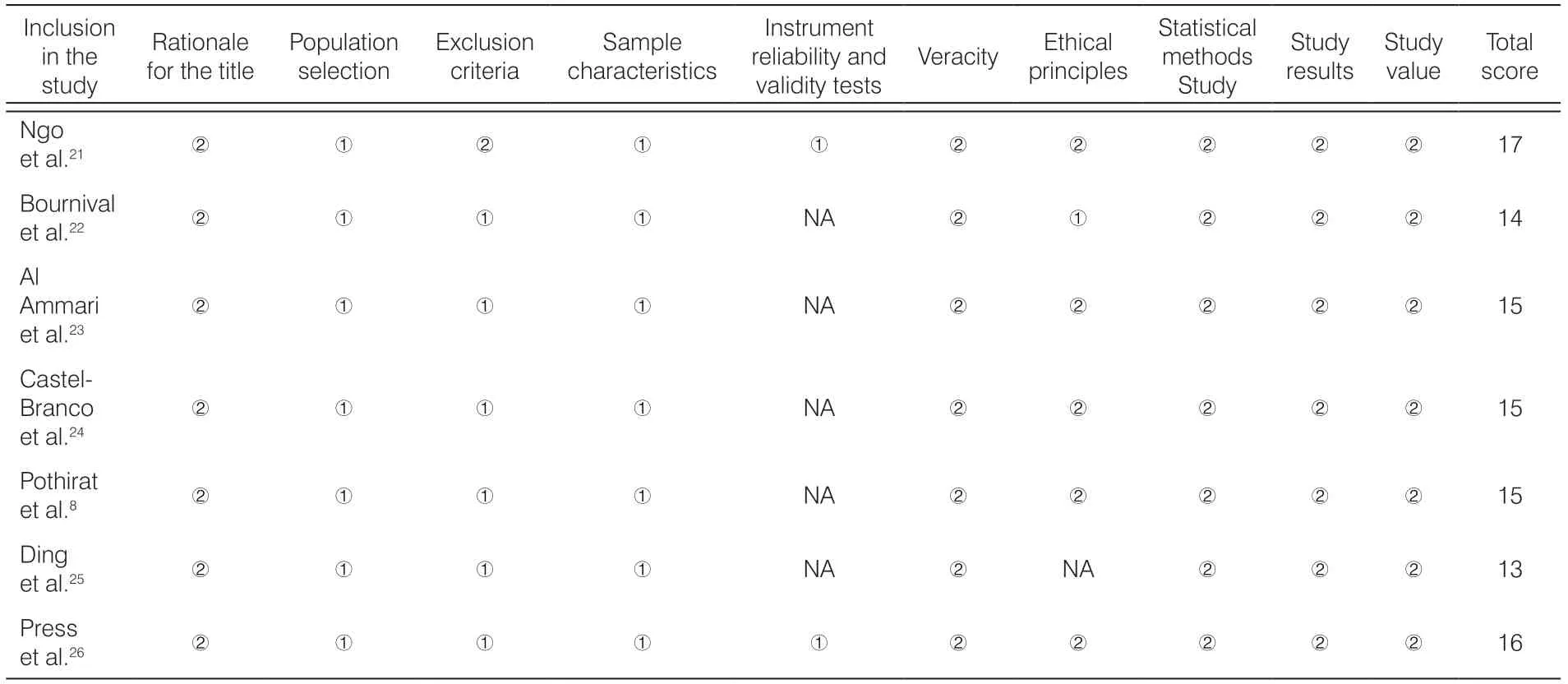
Table 3. Results of the JBI cross-sectional survey bias risk assessment.
Good quality: 3 or 4 stars (*) selected in the study population, 1 or 2 stars for comparability and 2 stars for outcome assessment; fair quality: 2 stars selected in the study population, 1 or 2 stars for comparability and 2 or 3 stars for outcome assessment; poor quality: 0 or 1 star selected in the study population, 0 stars for comparability and 0 or 1 star for outcome assessment.
3.3. Inhalant use
Analysis of 13 studies reporting on inhaler use in COPD patients revealed that 76% (95% CI: 0.69–0.83) of patients made at least one handling error (Figure 3). Significant heterogeneity was observed in all included studies, withI2= 93.6%, heterogeneity chi-square = 188.49, df = 12, andP= 0.000. Sensitivity analysis showed that with four studies17,19,20,22sequentially excluded, the combined effect sizes decreased to 86.6% (95% CI: 0.85–0.88), 76.5% (95% CI: 0.75–0.78), 83.1% (95% CI: 0.82–0.85), 83.3% (95% CI: 0.82–0.85).
3.4. Subgroup and sensitivity analyses
The included studies were subjected to subgroup analysis according to different countries, study types, years of publication, and inhaler types. The greatest change in heterogeneity was when study types were subjected to subgroup analysis. Among them, forest plots of seven cross-sectional studies for inhalant use error rates showed I2 = 57.2%, heterogeneity chi-square = 14.01, df = 6,P= 0.030. Excluding each cross-sectional study in turn, only excluding Castel-Branco et al.24resulted in no heterogeneity, with a combined effect size = 71%, 95% CI: 0.66–0.76, I2 = 0%; heterogeneity chi-square = 3.69, df = 5,P= 0.594, see (Figure 4). Therefore, it was determined that Castel-Branco et al.24was the main source of heterogeneity in the cross-sectional studies.
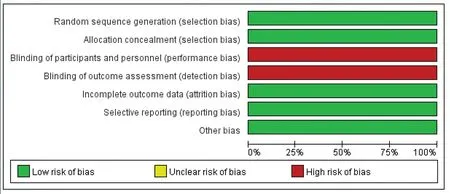
Figure 2. Results of risk bias evaluation of randomized controlled studies.
Analysis of DPI, MDI, and SMI revealed incorrect use of rates of >50% for all inhaler types. DPI use was reported in 9 of the 13 included studies, and meta- analysis using a random effects model showed that 66% (95% CI: 0.57, 0.74) of patients used it incorrectly (Figure 5). Seven studies reported on MDI use, and metaanalysis using a random-effects model showed that 67% (95% CI: 0.57, 0.77) of patients used it incorrectly (Figure 6). Six of the included studies reported on SMI use and the results of meta-analysis using a random effects model showed that 51% (95% CI: 0.38, 0.64) of patients used it incorrectly (Figure 7).
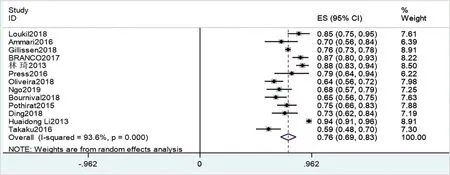
Figure 3. Forest plots of error rates for at least 1 inhaler.
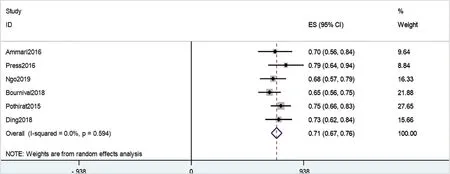
Figure 4. A cross-sectional forest map of the error rates of different inhalants.
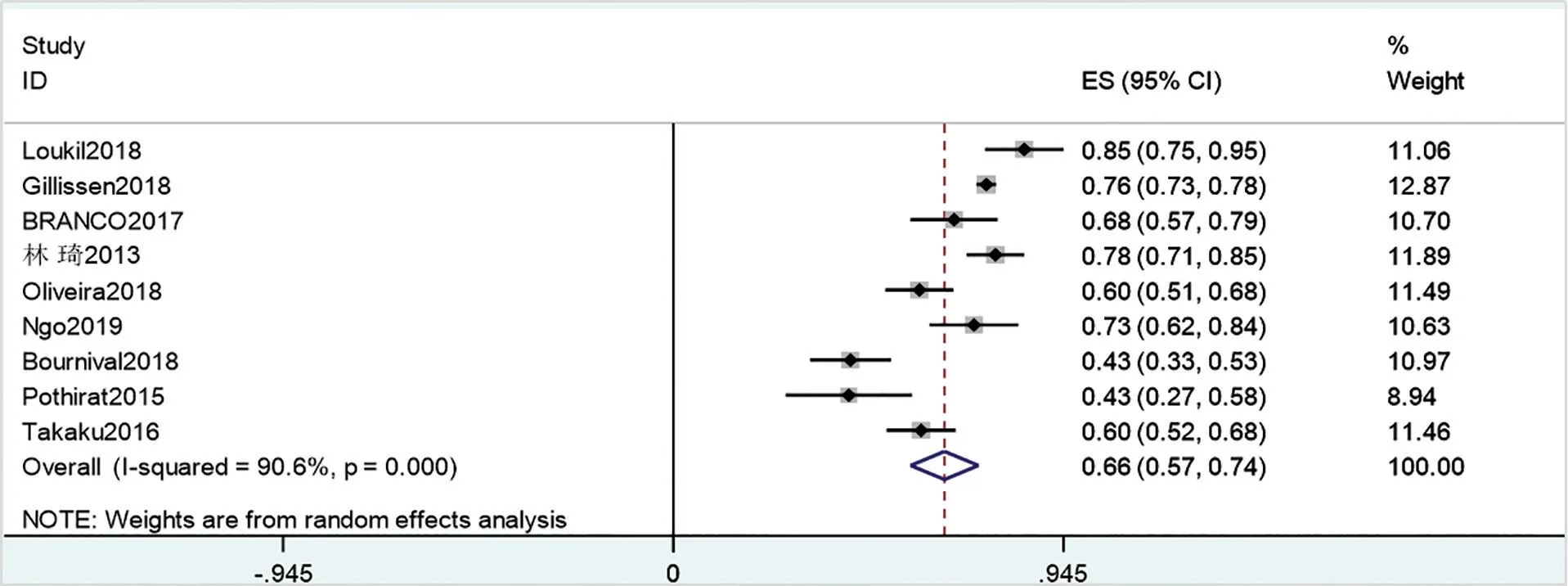
Figure 5. Forest plot of error rates for use. Abbreviation: DPI, dry powder inhaler.
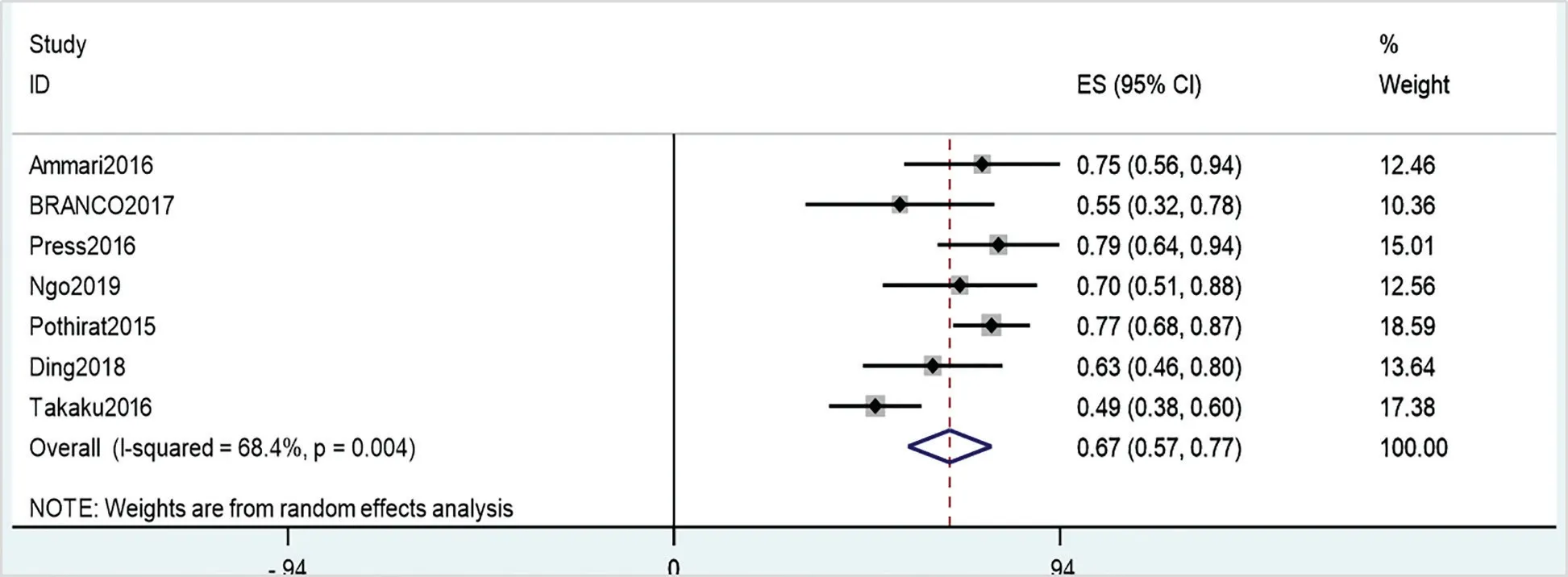
Figure 6. Forest plot of error rates for quantified inhaler use.

Figure 7. Forest plot of errors in SMI use. Abbreviation: SMI, soft mist inhalers.
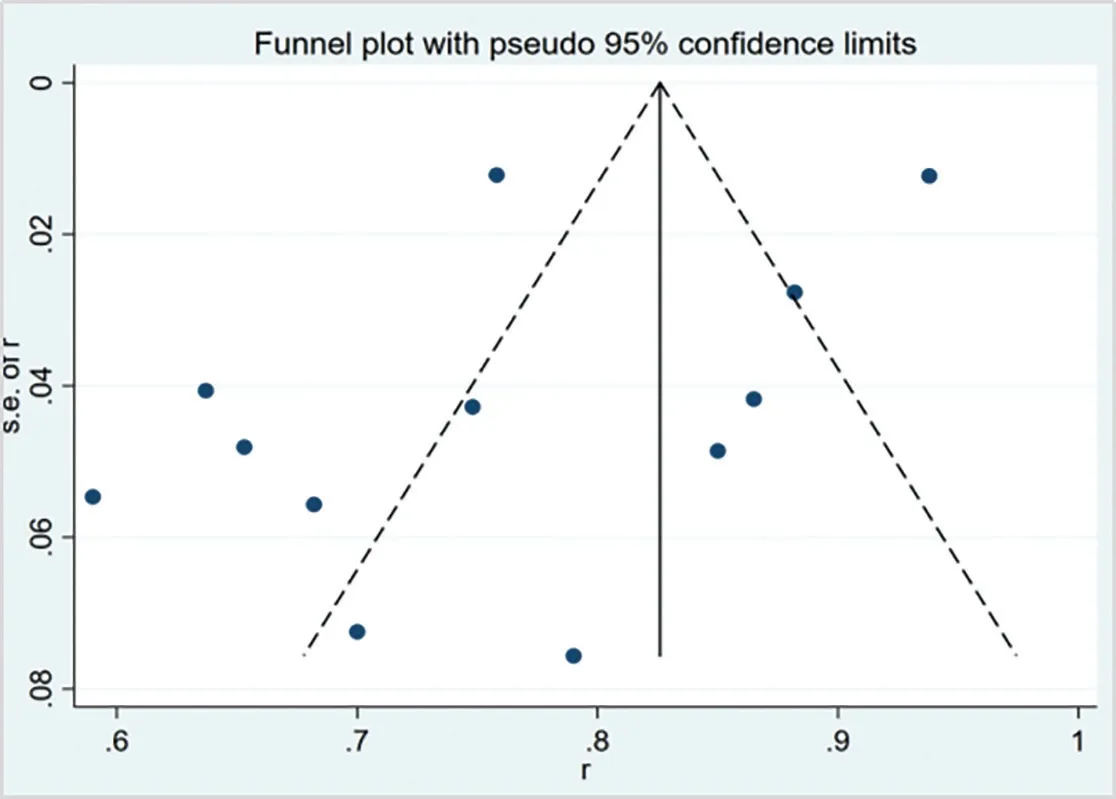
Figure 8. Funnel plot of at least 1 inhaler error made.
3.5. Publication bias
To check for potential publication bias, Begg’s and Egger’s tests were performed to quantitatively assess the symmetry of the funnel plots (Figure 8). The Begg’s rank correlation test (P= 0.304) and Egger’s test (P= 0.223) showed that differences were not statistically significant and no publication bias was present.
4. Discussion
This study found that 76% of patients made at least one inhaler error and that the rate of MDI handling errors was greater than the rate of DPI and SMI handling errors. MDIs have a high rate of oropharyngeal hyperdeposition and require coordination between drive and inspiration.11DPIs require high inspiratory flow rates and the effects of humidity, which have an impact on dose accuracy.13Overall, the operational steps of “handlung coordination”, “exhaling all the air,” “holding the breath,” and “slow and deep inhalation” were the most common errors. Approximately 60% of patients failed to hold their breath as required or had difficulty in hand- to-mouth coordination, and approximately 50% of patients fail to exhale and inhale slowly and deeply. Analysis of SMI errors showed that the step to “inhale slowly and deeply and press the dose release button while inhaling” resulted in the highest number of errors, which is consistent with reports of simultaneous inhalation and dose release of MDIs.11,28,29SMIs have been shown to emit medication more slowly and the aerosols produced last 4–10 times longer than aerosols in pressurized dose inhalers, releasing a higher proportion of the dose into the lungs.30–32Also, SMI lung deposition is greater than with DPIs.33
The three inhalers evaluated differ in their technical operation and how they function. As a result, patient preferences for inhaler type vary. More importantly, the patient’s preference for the device is closely related to his or her compliance with the inhaler.22,27Therefore, the clinician’s choice of inhalation device should be based on the characteristics of the inhalation device, the patient’s ability to use the device, and the patient’s preference. COPD disease control, disease progression, and health care costs are influenced by patients’ inhalation techniques.11,23,33Therefore, appropriate inhaler equipment, ongoing educational interventions, and regular supervision are essential to reduce disease exacerbation and improve quality of life. In-person demonstration and training will improve the accuracy of patient inhaler use,25permitting medical staff to observe patient inhalation technique handling and enhancing patient education on inhaler technique. By increasing patient knowledge related to inhalation techniques, incorrect inhalation techniques of patients can be corrected. This will reduce the incidence of errors and increase the effectiveness of inhalation medication, reducing the hospitalization rates of COPD patients. At present, there are a large number of COPD patients and very few of them are educated adequately about the disease or properly trained in inhalation techniques. In the future, electronically monitored inhalation devices may provide an effective solution to the challenges of educating patients with chronic disease due to limited health care resources. Regardless, there remains a pressing need for research that improves our understanding of the risk factors that affect correct inhalation by patients, identifies high-risk groups, and objectively determines the risk of inhalation errors in patients, which is essential in terms of optimizing device selection and disease control.
5. Conclusions
Although this meta-analysis provides important data for addressing inhalation errors in COPD, there are limitations to this study which should be noted: (1) subjectivity in the assessment of patients inhalation technique and patient-reported bias may have influenced the results; (2) reasons for device use errors were only analyzed for patients, as clinicians, nurses, and pharmacists were not included in the analysis; (3) the sample size was relatively small and only literature published in English and Chinese was considered; (4) inclusion of different countries, study types, literacy levels, inhaler types, and COPD patient disease classifications may have influenced the inhaler technique error rate results. Therefore, researchers in all countries are encouraged to conduct additional studies with larger sample size and more detailed analyses to improve the efficacy of inhaler use and inform the development of electronically monitored inhalation devices.
Ethics approval
Ethical issues are not involved in this paper.
Conflicts of interest
All contributing authors declare no conflicts of interest.
- Frontiers of Nursing的其它文章
- Repeated measurements of depression and outcomes in patients receiving hemodialysis†
- Depressive symptoms, social support, cognitive function, and stigma: predictors of resilience in caregivers of children with intellectual disabilities
- Clinical nursing visual health education pathway for patients with perianal abscess†
- Predictive roles of organizational and personal factors in work engagement among nurses
- Evaluation of the efficacy of Tian dan shu gan rehabilitation exercise in improving the short-term quality of life of patients with acute myocardial infarction after percutaneous coronary intervention
- Dehydration risk factors and outcomes in older people in rural areas

